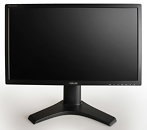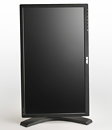- Joined
- Dec 6, 2011
- Messages
- 4,784 (0.96/day)
- Location
- Still on the East Side
Earlier this week at CES 2012 in Las Vegas, ASUS showcased a brand new monitor designed for professional artists and photographers, a 27-inch model called VA278Q that features an LED backlight, an IPS panel, a native resolution of 2560 x 1440 pixels, and 178/178 degree viewing angles.
ASUS' widescreen also has a 'Smart Contrast Ratio' of 80,000,000:1, DVI, HDMI and DisplayPort connectivity, a stand enabling tilt, pivot, swivel, and height adjustments, and the Splendid Video Intelligence Technology providing six pre-set modes (Theater, Scenery, Gaming, Night View, sRGB, and Standard) that 'optimize colors and image fidelity for the onscreen content'. No word yet about the price tag or availability of the VA278Q.


View at TechPowerUp Main Site
ASUS' widescreen also has a 'Smart Contrast Ratio' of 80,000,000:1, DVI, HDMI and DisplayPort connectivity, a stand enabling tilt, pivot, swivel, and height adjustments, and the Splendid Video Intelligence Technology providing six pre-set modes (Theater, Scenery, Gaming, Night View, sRGB, and Standard) that 'optimize colors and image fidelity for the onscreen content'. No word yet about the price tag or availability of the VA278Q.


View at TechPowerUp Main Site





 and all the pixel density I need. Unfortunately, these BEAUTIFUL screens are air-traffic control prices and well out of my reach
and all the pixel density I need. Unfortunately, these BEAUTIFUL screens are air-traffic control prices and well out of my reach 

